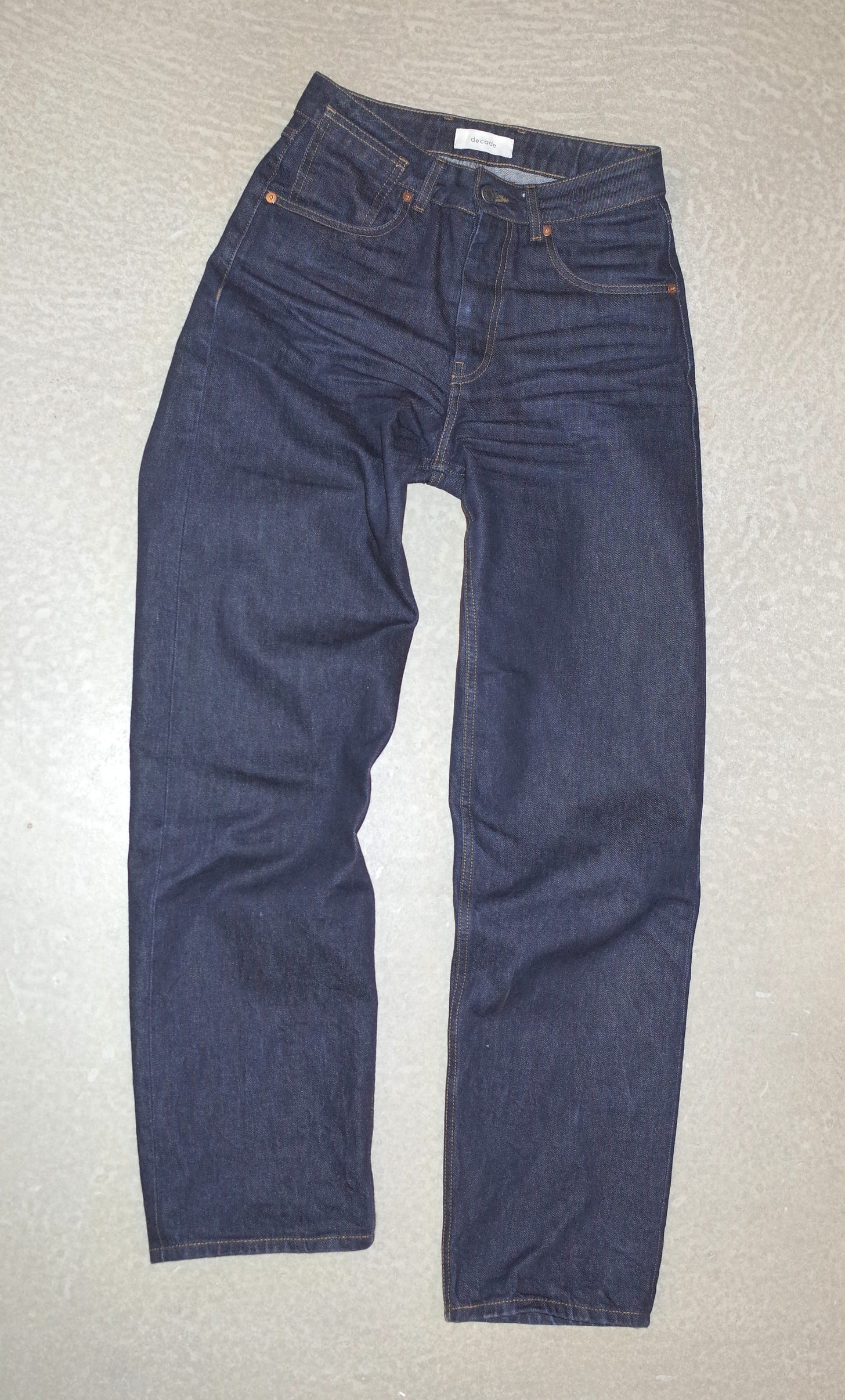Fit Fluency - How to speak the same language as the size chart
Most size charts show garment measurements—not body measurements. This is how to make them make sense ahead of our spring release.
Spring is coming. Our new collection is almost here (it looks fab, get excited) If you’re planning to add a new pair of jeans to your life, this is your reminder to set yourself up for success for online shopping ahead of the launch.
I don’t just design Decade jeans—I also work the shop floor. I am obsessed with seeing my jeans on real people, in real life, every single day. I watch how denim behaves on the body, where it gives, where it doesn’t, and how someone’s body language changes when they find a pair that actually fits.
Good denim—the kind I make—softens with wear, holds its shape, and lasts.
It’s worth getting right. And that journey starts way before you hit “add to cart.”
Body VS garment measurements.
Knowing your body measurements is a really good thing. It’s helpful. It’s powerful. But it’s not the whole story.
Bodies shift, they change over time—and measuring your own body can be awkward at best, triggering at worst. Measuring your clothes, on the other hand is neutral, factual, and way more accurate when you’re trying to find a garment that will work for you. Size labels are basically a branding exercise. There’s no universal sizing standard, and even within a single brand, fit can vary by fabric, wash, or style.
Most size charts—including ours—are based on flat garment measurements:
the actual specs of the clothing when laid flat, not the dimensions of the body it's meant to fit. So if you’re trying to figure out what size to buy, it helps to compare garment to garment, not body to garment.
So… how do you bridge that gap?
As a denim designer (and someone who fits jeans on all kinds of bodies every day), I can tell you this: the best place to start is with a pair of jeans you already love (if those don’t exist in your wardrobe keep reading) If they fit well and feel good—that’s your roadmap. Lay them flat and take the following measurements:
Waistband: Pull it taught and flat and measure straight across (doubled if the size chart is in the round. Decade size charts use flat measurements).
Hip: About 6–7” down from the top, measured flat.
Rise: Crotch seam to top of waistband.
Thigh: About 1” down from the crotch seam.
Inseam: Crotch seam to hem.
Once you have these numbers, you’re speaking the same language as the size chart. This is when things start to click.
Decade shopping tips.
Fabric matters. Our jeans are made using 100% cotton denim. So you must take measurements from other 100% cotton jeans. Don’t use stretch denim—they behave completely differently.
Stretchy jeans may appear to fit more snugly, but rigid denim follows an entirely different set of rules. Your garment measurements will only help if they reflect the fabric you're actually shopping for.
If you fall between sizes, go smaller. 100% cotton denim relaxes with wear. If your Decade jeans feel snug at first, thats the sweet spot.
But what if you don’t own anything similar?
Totally fair. If you’re exploring a new silhouette or buying jeans for the first time in a while, I recommend carving out some time to go try stuff on. Thrift stores are your best friend here. They hold a massive range of sizes, fabrics, shapes, and styles all in one place. And the men’s section is where it’s at. More natural fibres, sturdier fabrics, wider leg cuts.
Don’t stress about finding something perfect—just find something close.
Something with the general shape, leg width, or rise you’re looking for. From there, do a quick DIY fit session:
Pin the waist to fit perfectly
Trim the inseam or make a note if you want it longer and by how much
Mark it up with chalk, tape, or whatever’s handy
Take down the same set of measurements listed above, and use this data as your reference point when shopping online
It doesn’t have to be perfect—the wash can be wrong, the hem can be messy. Use your imagination. What we’re doing here is DIY-ing a custom fit exercise. It’s personal, and we love to see it. Think of it as a low-stakes study in your own preferences—a way to test and mock up different shapes if you’re trying something new for the first time.
Take Your Time and explore
Buying Decade is an investment—I know that. So doing a little prep work ahead of time will make everything smoother when you’re ready to take the leap.
And let me tell you: these jeans are worth the leap.
Finding denim that fits beautifully is a process. It takes trial and error. It takes time. Be kind to yourself during that time. No one is born knowing their ideal rise or perfect hip-to-thigh ratio. Start where you are. Use what you have. Try things on. Play around.
And when our spring collection drops you’ll be ready—with less guesswork, and way more confidence. Armed with perfect fluency speaking a new language.
xxx, Molly





